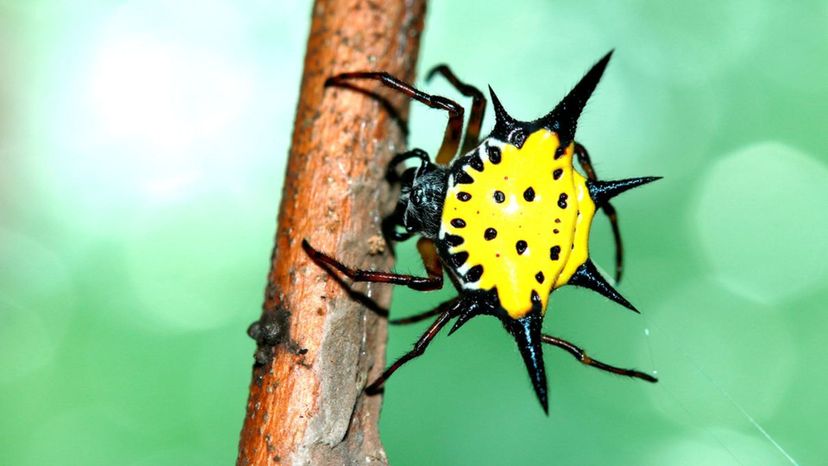
Image: Shutterstock
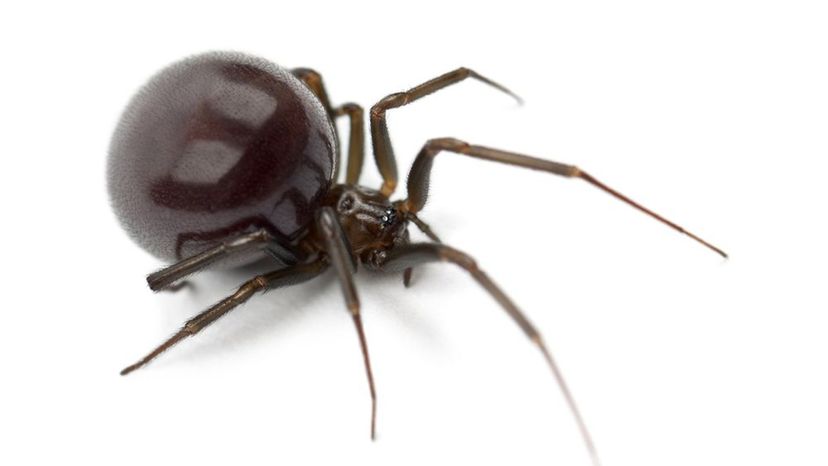
Shutterstock
Which spider is shown in this image?
American House Spider
Male American House Spiders have orange legs. The females' legs are yellow. The legs of both males and females have dark bands.
Golden Orb Weaver
Sowbug Killer Spider
Mexican Orange-Kneed Tarantula
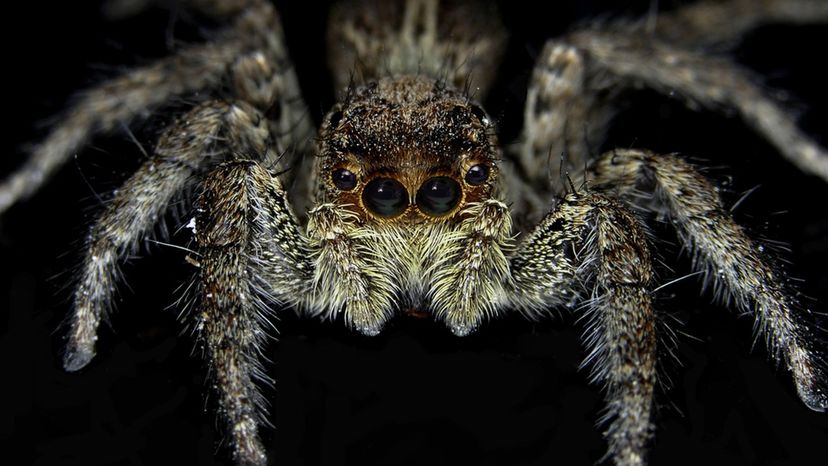
Shutterstock
Which spider is shown in this image?
Long-bodied Cellar Spider
Giant Crab Spider
Tan Jumping Spider
Like most other jumping spiders, Tan Jumping Spiders have great eyesight. They can be found is several areas throughout North and Central America
Southeastern Wandering Spider
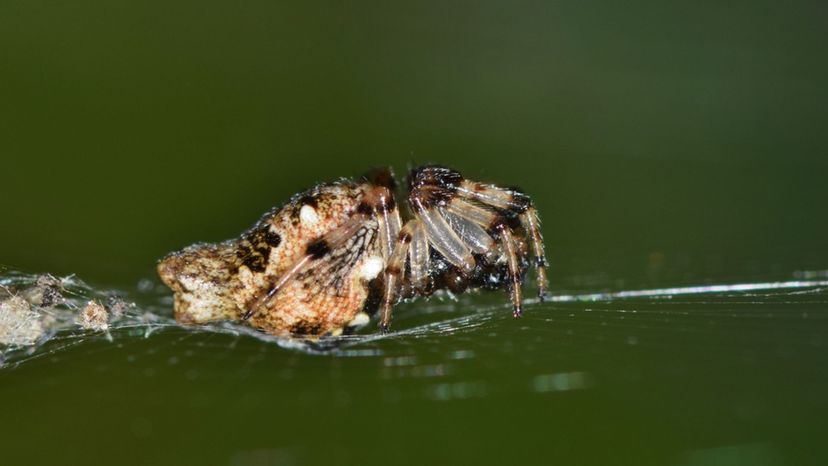
Shutterstock
Which spider is shown in this image?
Eastern Harvestman
Trashline Orb Weaver
In general, the Trashline Orb Weaver is a very small spider. The female is larger than the male (as is the case with most spider species) with a body length of about 7.5 millimeters. These spiders recycle waste material, adding it as camouflage to their webs.
Stealthy Ground Spider
Green Crab Spider
Advertisement

YouTube
Which spider is shown in this image?
In general, the Trashline Orb Weaver is a very small spider. The female is larger than the male (as is the case with most spider species) with a body length of about 7.5 millimeters. These spiders recycle waste material, adding it as camouflage to their webs.
Cross-spider
Western Spotted Orb Weaver
Arrowhead Orb Weaver
Once the sun rises, the Arrowhead Orb Weaver begins to take down its web. It will build another web for that day and repeat the process the next day.
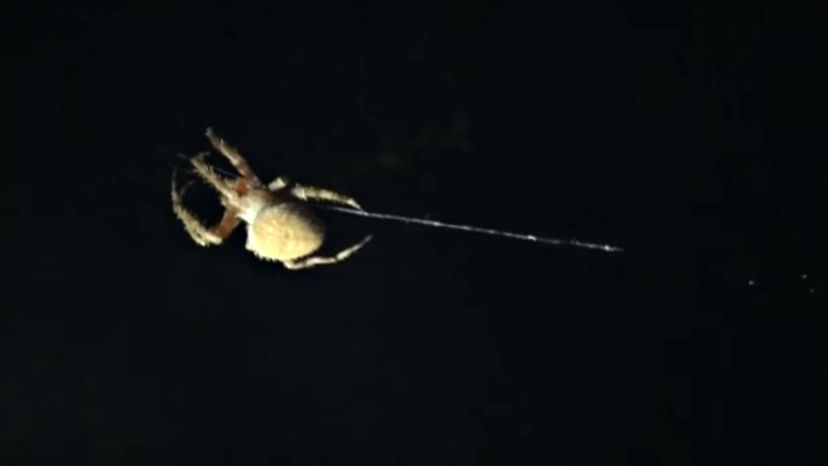
YouTube
Which spider is shown in this image?
Hacklemesh Weaver
Silver Garden Spider
Spotted Orb Weaver
Spotted Orb Weaver Spiders are mostly nocturnal. Their abdomens are brown and hairy on top but the underside is black and has two white spots.
Daddy Long Legs
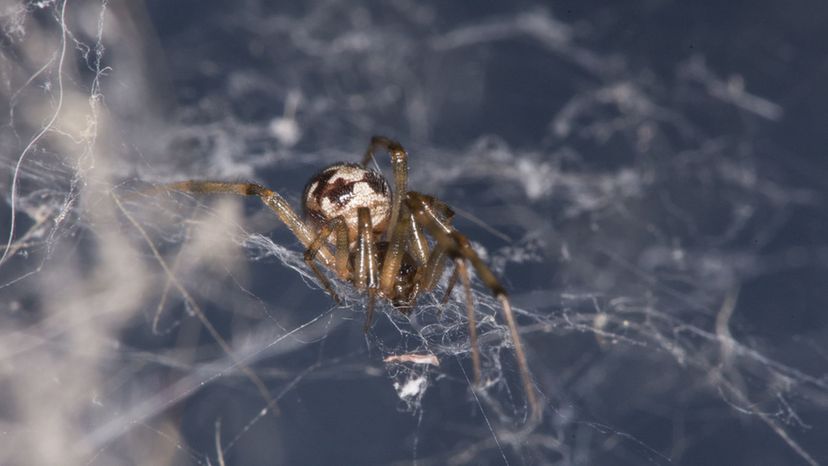
Shutterstock
Which spider is shown in this image?
Triangulate Cob Web Spider
The distinctive triangular pattern on this spider's abdomen leads to its name. The Triangulate Cob Web Spider is a common house spider that can be found in many regions of the world.
Woodland Jumping Spider
Wolf Spider
Curlyhair Tarantula
Advertisement
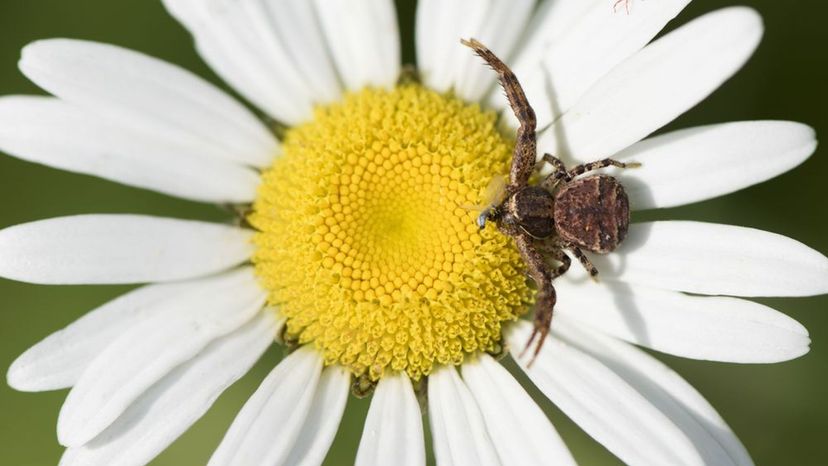
Shutterstock
Which spider is shown in this image?
Six-spotted Fishing Spider
Bark Crab Spider
The "crab†in this spider's name is due to its front pair of legs being quite thick and long. It's unlikely you'll find this spider indoors since it prefers wooded areas as the ‘bark' in its name suggests.
Sac Spider
Black Widow
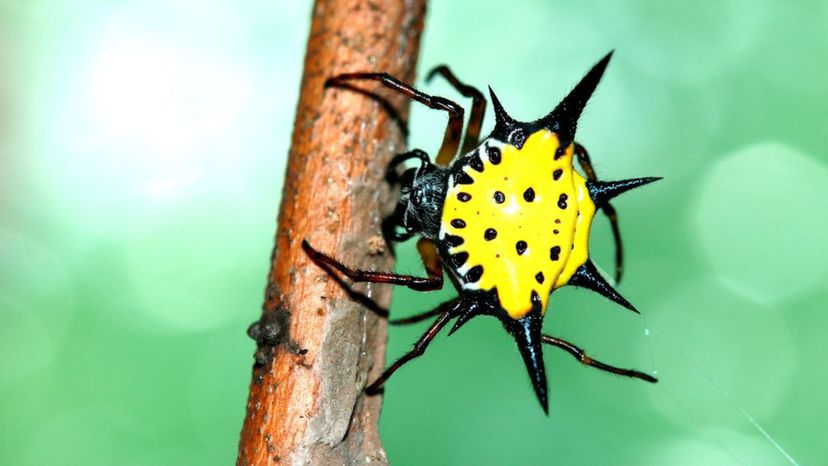
Shutterstock
Which spider is shown in this image?
Bold Jumping Spider
Johnson Jumping Spider
Orb Weaver
Spiny Backed Orb Weaver
If you measure from spike to spike across this spider's back you could get as much as 3 centimeters - that's over an inch. It's only in the case of the females, however, since the males' projections are more like stubby knobs than spikes.
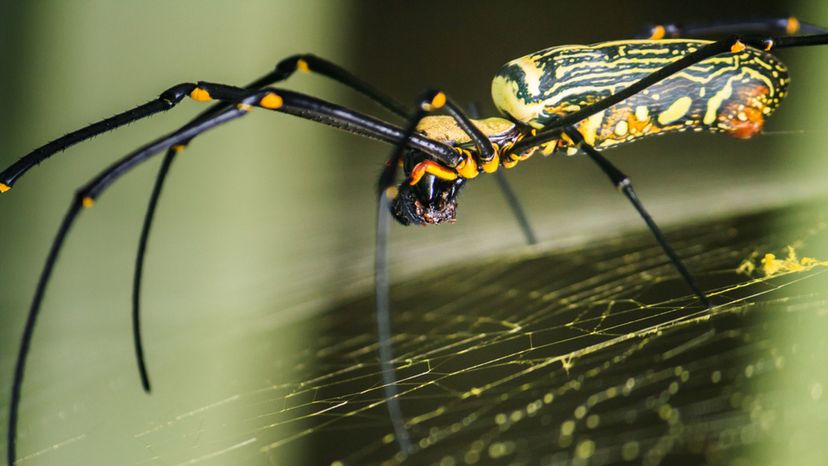
Shutterstock
Which spider is shown in this image?
Desert Tarantula
Golden Orb Weaver
As far as its name goes, it is the web it makes and not the spider itself that has a golden sheen. These large spiders are, in fact, colored silvery-grey to plum with brown-black legs that tend to have yellow bands.
Brown Recluse
Red Folding Trapdoor Spider
Advertisement
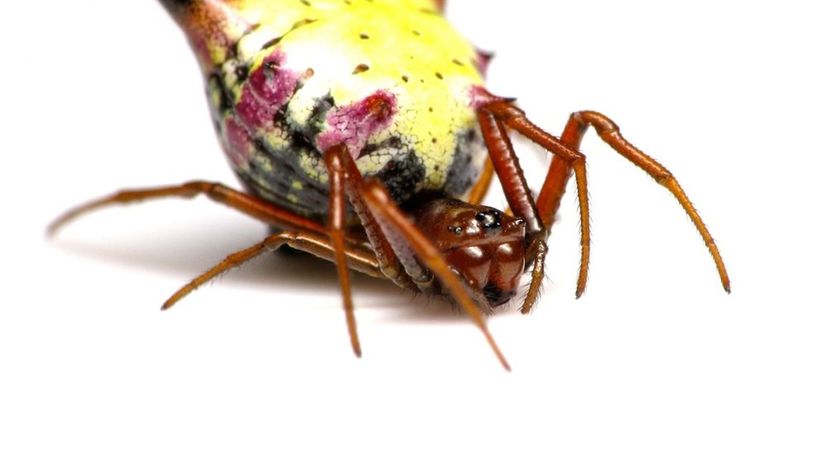
Shutterstock
Which spider is shown in this image?
Eastern Harvestman
Carolina Wolf Spider
Arrow-shaped Micrathena Spider
The characteristic arrow-shaped abdomen which gives this spider its name is only featured in the females of the species. The web of the Arrow-shaped Micrathena Spider also has a characteristic feature - a hole in its center.
Running Crab Spider
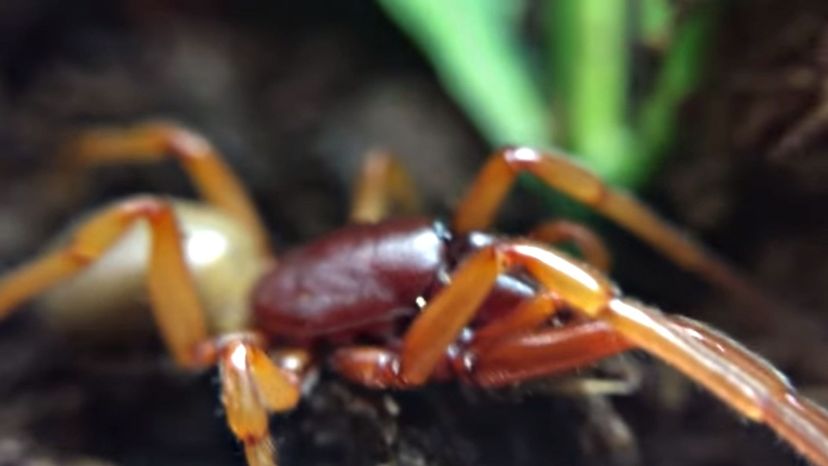
n/a
Which spider is shown in this image?
Sowbug Killer Spider
Sowbugs (aka woodlice) may be tough little pests, but they are no match for the Sowbug Killer Spider which views them as regular prey. These spiders live close to their food source, so you can find them under rocks and logs or in leaf litter.
Spined Micrathena Spider
Parson Spider
Giant Crab Spider
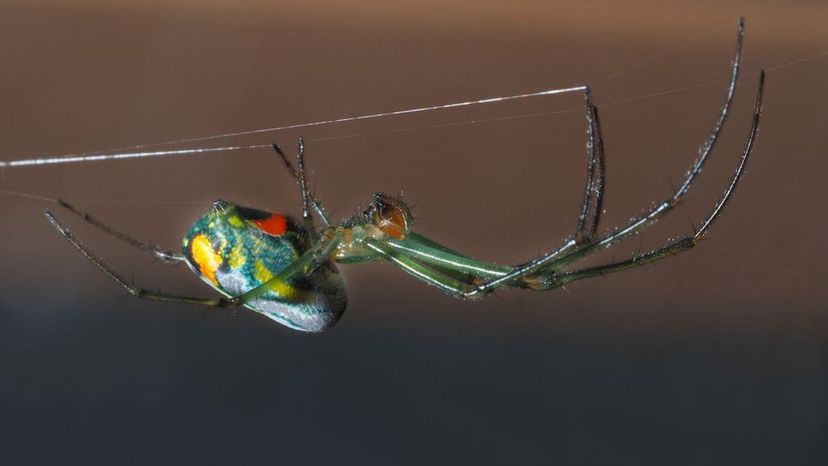
Shutterstock
Which spider is shown in this image?
Fishing Spider
Cat-faced Spider
Venusta Orchard Spider
The painted abdomen of this large spider will vary in color from one spider to the next. Furthermore, while most orb weaver spiders have a more or less spherical abdomen, this species is noted for the oblong shape of its body.
Brown Widow
Advertisement
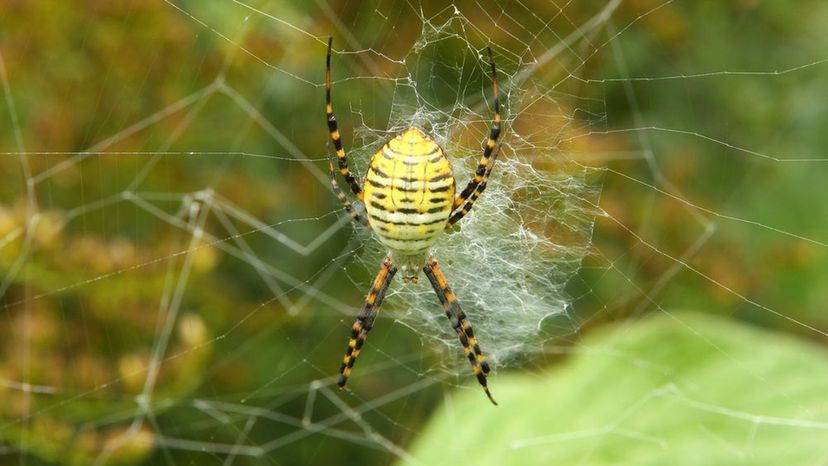
Shutterstock
Which spider is shown in this image?
Banded Garden Spider
The egg cocoons of the Banded Garden Spider can hold several hundred eggs. The eggs are laid in early fall and the young spiders emerge from the cocoons in spring.
Shamrock Spider
Marble Orb Weaver
Spotted Orb Weaver
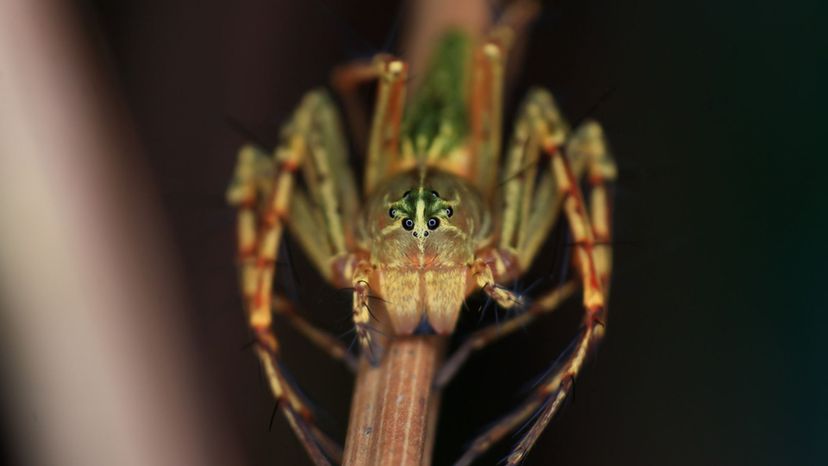
Shutterstock
Which spider is shown in this image?
Southeastern Wandering Spider
The Southeastern Wandering Spider is an active hunter and as such does not spin a web. They are aggressive, venomous, and hunt at night.
Red ant-mimic Spider
Nursery Web Spider
Tan Jumping Spider

Shutterstock
Which spider is shown in this image?
American House Spider
Brown Recluse
Western Spotted Orb Weaver
This spider is easily identified by the bold pattern on its abdomen. The Western Spotted Orb Weaver's circular web is often located out in the open away from foliage.
Green Crab Spider
Advertisement
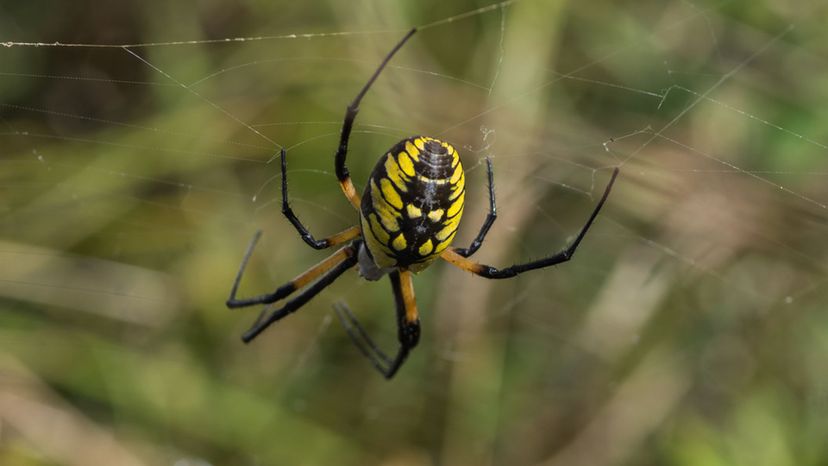
Shutterstock
Which spider is shown in this image?
Stealthy Ground Spider
Black and Yellow Garden Spider
Although there are color variations from one spider to the next, this spider is known by the distinctive black and yellow pattern on its abdomen. Also, the females of this species are about four times larger than the males.
Cat-faced Spider
Trashline Orb Weaver
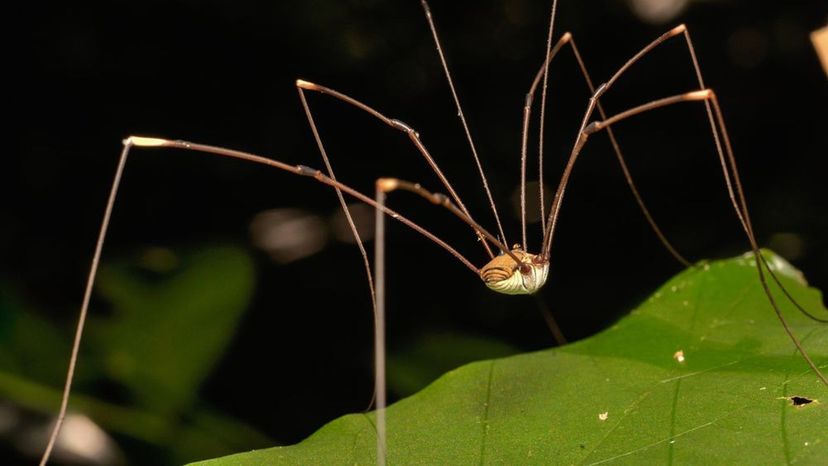
Shutterstock
Which spider is shown in this image?
Daddy Long Legs
While the true Daddy Long Legs is not a spider, there is a species of spiders that is referred to as Daddy Long Legs. While real Daddy Long Legs have 8 legs like a spider, they only have two eyes instead of the eight that spiders typically have.
Parson Spider
Triangulate Cob Web Spider
California Trapdoor Spider
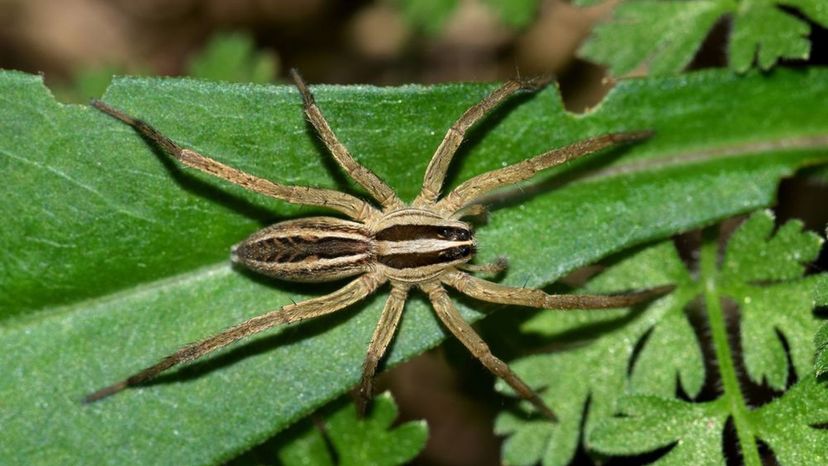
Shutterstock
Which spider is shown in this image?
Cross-spider
Orb Weaver
Wolf Spider
Keen eyesight and the tendency to live and hunt alone are a couple of the characteristics of the Wolf Spider. They are also known to hunt down and pounce on their prey.
Bark Crab Spider
Advertisement
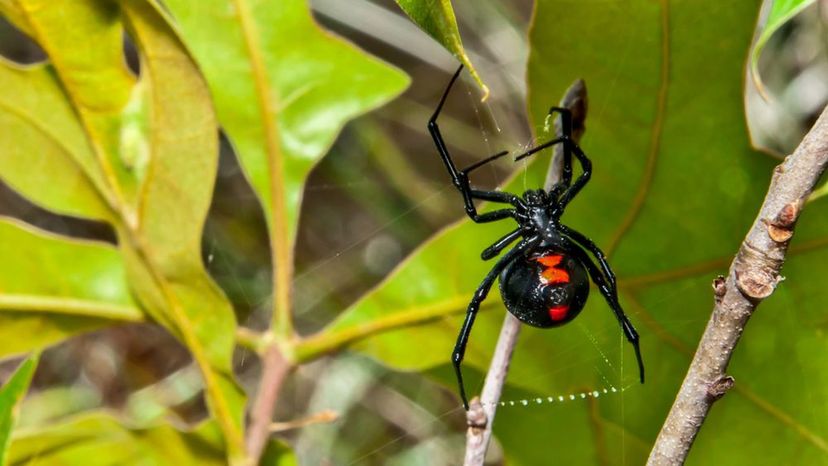
Shutterstock
Which spider is shown in this image?
Mexican Orange-Kneed Tarantula
Hacklemesh Weaver
Marble Orb Weaver
Black Widow
The venom of the Black Widow Spider is said to be up to 15 times as strong as that of a rattlesnake. A healthy adult will most likely not die from being bitten by a Black Widow, however, small children, the elderly, and sick people may not fare so well.
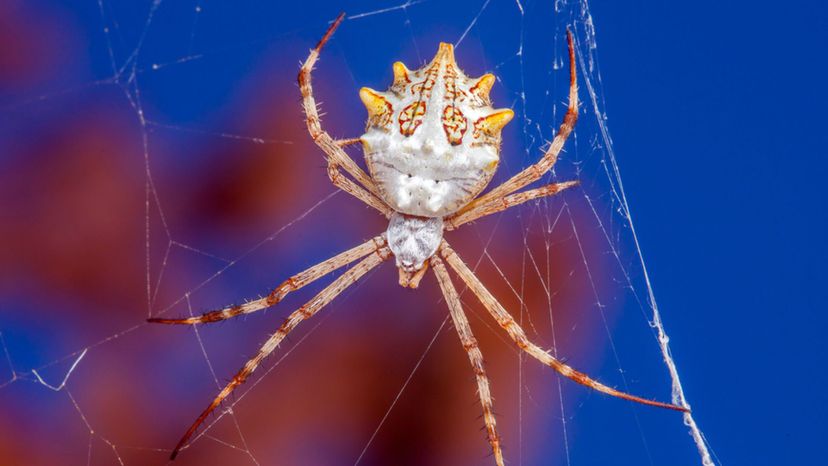
Shutterstock
Which spider is shown in this image?
Nursery Web Spider
Silver Garden Spider
Found throughout warmer regions of the Americas, the Silver Garden Spider can often be distinguished by the zig-zag stabilizing pattern it forms in its web. The female of the species can grow up to 3.5 centimeters long.
Johnson Jumping Spider
Golden Orb Weaver

n/a
Which spider is shown in this image?
Bold Jumping Spider
The Bold Jumping Spider is often called the Daring Jumping Spider. Among its distinguishing traits are mouthparts which are an iridescent blue or green.
Arrowhead Orb Weaver
Western Spotted Orb Weaver
Brown Widow
Advertisement
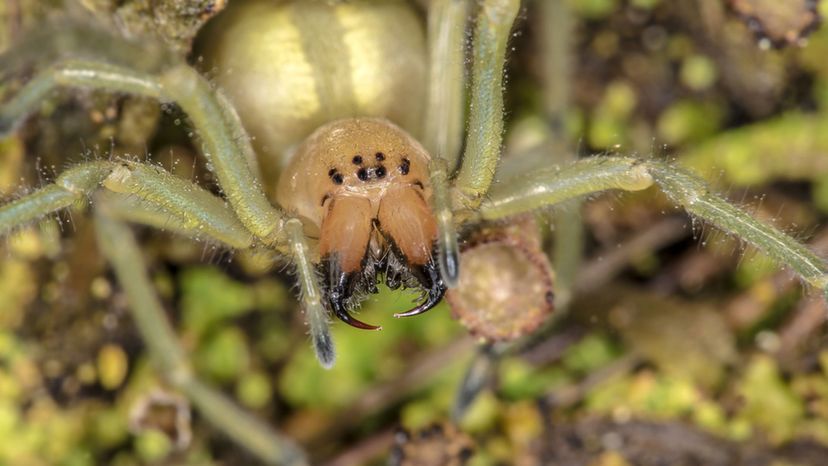
Shutterstock
Which spider is shown in this image?
Arrow-shaped Micrathena Spider
Sac Spider
Sac Spiders have an abdomen that is conical in shape. They can be found in many regions throughout the world.
Carolina Wolf Spider
Curlyhair Tarantula

Shutterstock
Which spider is shown in this image?
Spined Micrathena Spider
Eastern Harvestman
Stealthy Ground Spider
These mainly nocturnal spiders are wandering hunters. They do not build webs but tend to live on the ground in leaf litter, among decomposing wood, and under rocks.
Red Folding Trapdoor Spider
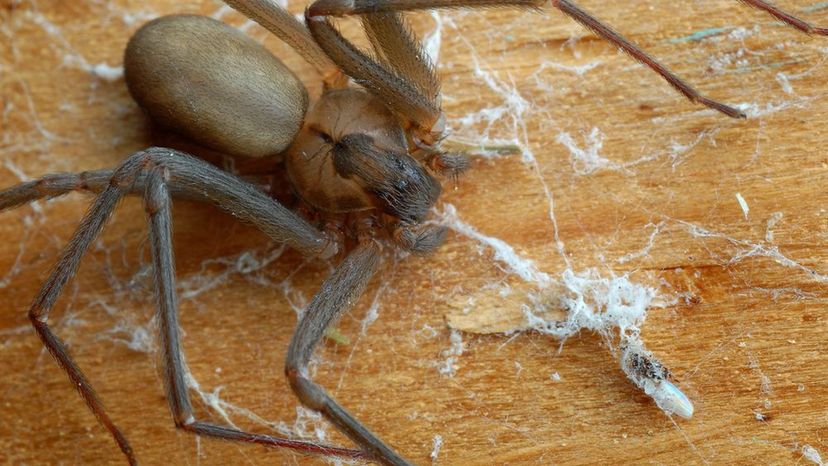
n/a
Which spider is shown in this image?
Brown Recluse
Although called "brown,†their colors can be anywhere from whitish to dark brown to blackish gray. Those bitten by the Brown Recluse Spider may need to seek medical attention to counter the effects of its venom.
California Trapdoor Spider
Spotted Orb Weaver
Venusta Orchard Spider
Advertisement
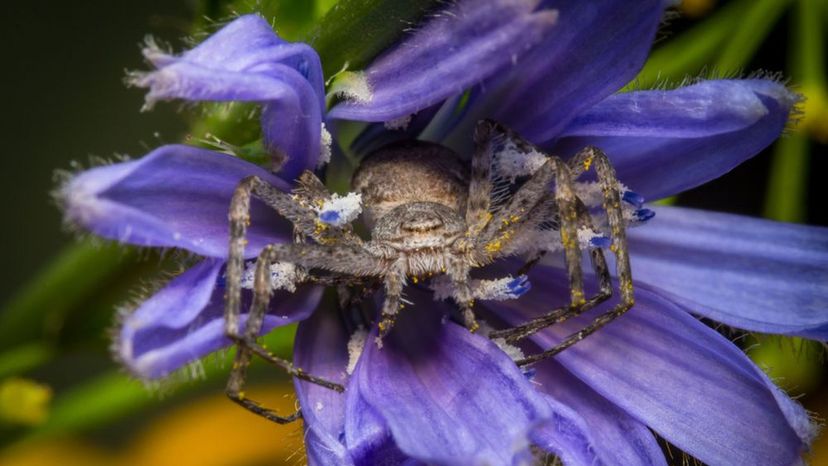
Shutterstock
Which spider is shown in this image?
Six-spotted Fishing Spider
Shamrock Spider
Running Crab Spider
Like other spiders that do not build webs, the Running Crab Spider uses its silk for egg sacs and as draglines. This species tends to have a leaf-like mark on its abdomen.
Black and Yellow Garden Spider
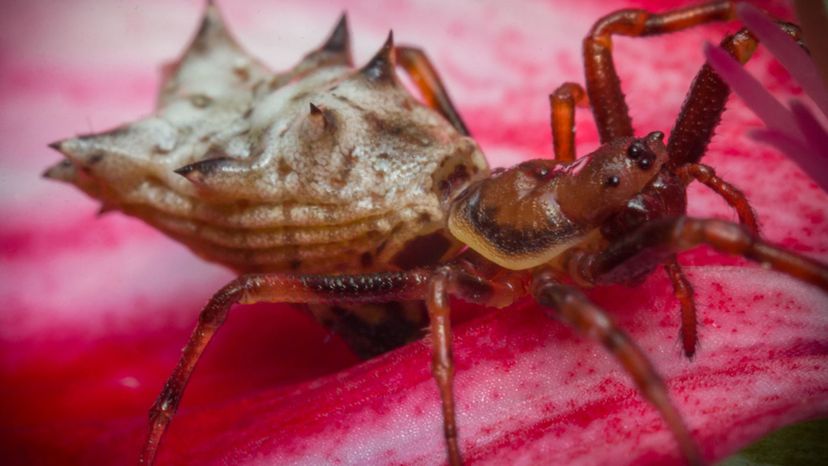
Shutterstock
Which spider is shown in this image?
Red ant-mimic Spider
Tan Jumping Spider
Daddy Long Legs
Spined Micrathena Spider
The female Spined Micrathena Spider is typically black with white markings. Her abdomen is encircled by five pairs of black spines.
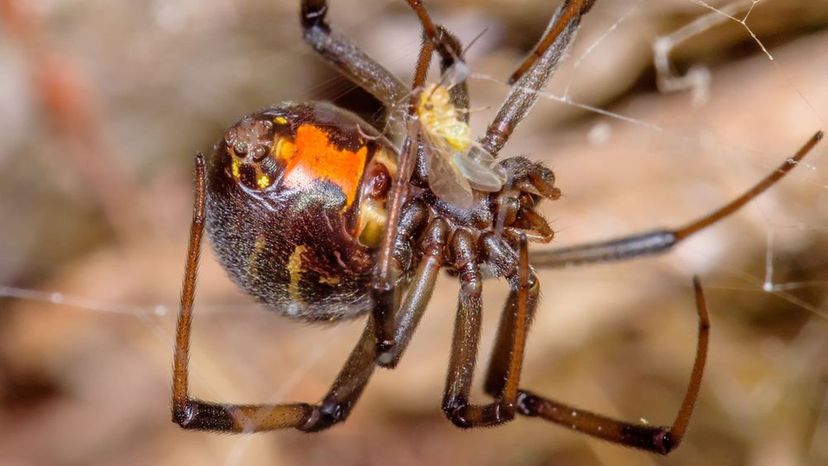
Shutterstock
Which spider is shown in this image?
Cross-spider
Brown Widow
Brown Widows closely resemble the immature version of the more dangerous Black Widow spiders. Their egg sacs are spiky and can each hold up to 150 eggs.
American House Spider
Wolf Spider
Advertisement
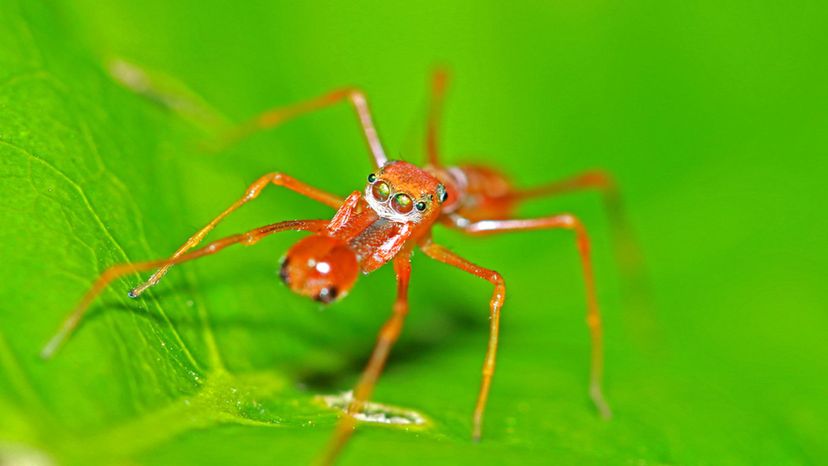
Shutterstock
Which spider is shown in this image?
Red ant-mimic Spider
The Red ant-mimic Spider uses its disguise for a double advantage. It fools would-be predators into thinking it's a red ant and so is often left alone. It also tricks the red ant (its most favored prey) into thinking it's one of them so it can get close enough for a meal.
Long-bodied Cellar Spider
Cat-faced Spider
Triangulate Cob Web Spider
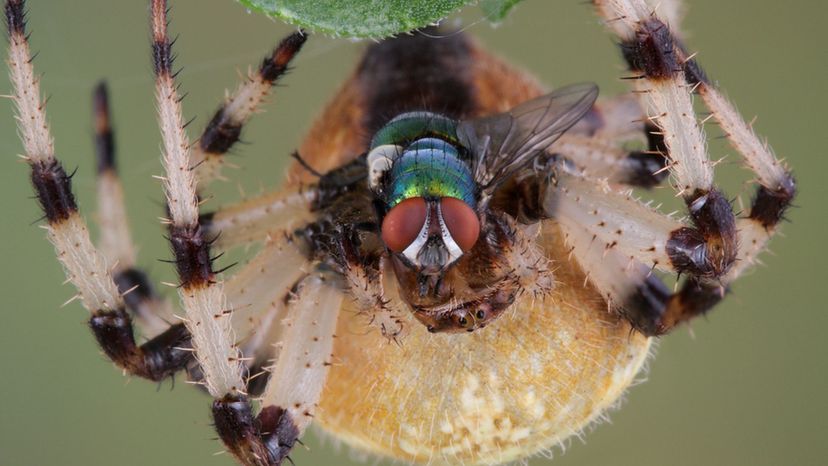
Shutterstock
Which spider is shown in this image?
Shamrock Spider
Despite its name, the Shamrock Spider is not green but rather can be white, yellow, bright red, purple or anything in-between. They do have the number three in common with the clover leaf in their name, however, as they display three stripes on their legs.
Black Widow
Mexican Orange-Kneed Tarantula
Bark Crab Spider
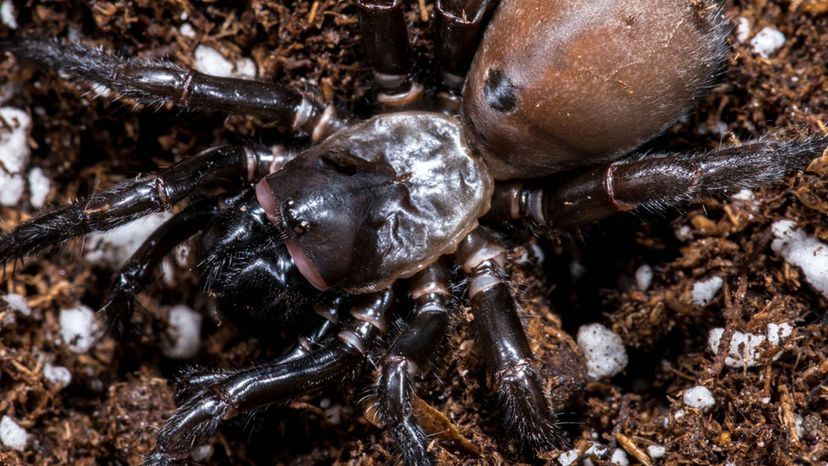
Shutterstock
Which spider is shown in this image?
Woodland Jumping Spider
Banded Garden Spider
California Trapdoor Spider
Except for the fact that its body is shiny and hairless, the California Trapdoor Spider looks pretty much like a small Tarantula. Its burrow is built with a hinged door made of silk so it can spring out and catch its prey.
Arrowhead Orb Weaver
Advertisement
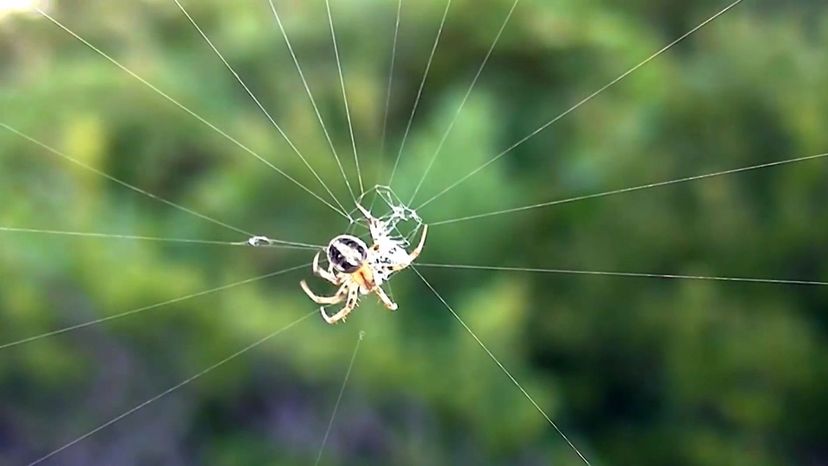
YouTube
Which spider is shown in this image?
Brown Recluse
Orb Weaver
The Orb Weaver Spider builds a spiral wheel-shaped web and not a ball as its name suggests. This is one of the most common groups of spiders found around the world.
Spiny Backed Orb Weaver
Marble Orb Weaver

YouTube
Which spider is shown in this image?
Stealthy Ground Spider
Nursery Web Spider
Trashline Orb Weaver
Red Folding Trapdoor Spider
The Red Folding Trapdoor Spider is related to both the Trapdoor Spider family and to Tarantulas. They do not spin webs, but rather live in underground burrows designed with a silk trapdoor from which the spider jumps out to surprise its prey.
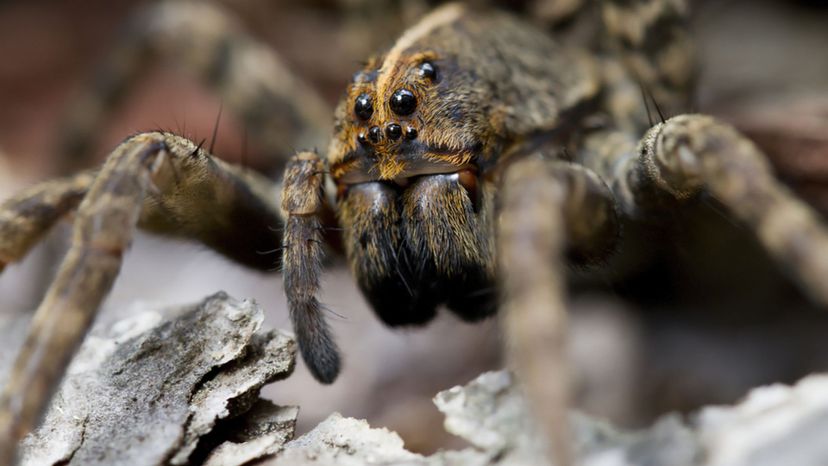
Shutterstock
Which spider is shown in this image?
Giant Crab Spider
Carolina Wolf Spider
These solitary hunters do not spin webs, preferring instead to actively hunt down their prey. The Carolina Wolf Spider is thought to be the largest of the Wolf Spiders throughout North America. It has been singled out as the official spider of South Carolina.
Sowbug Killer Spider
Silver Garden Spider
Advertisement

Shutterstock
Which spider is shown in this image?
Green Crab Spider
The Green Crab Spider has two pairs of remarkably long front legs. This wandering hunter does not build webs but uses its long legs to help grab and secure its prey.
Arrow-shaped Micrathena Spider
Parson Spider
Desert Tarantula
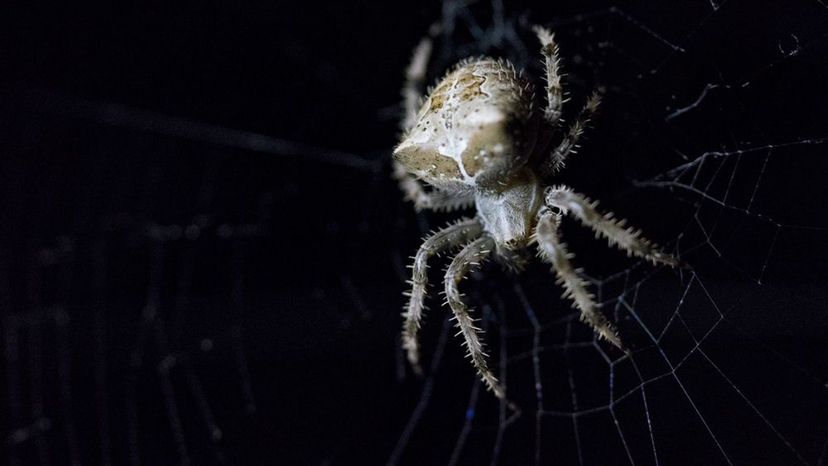
Shutterstock
Which spider is shown in this image?
Cat-faced Spider
The name of this spider is derived from a combination of its large abdomen and two very prominent "horns†like cat's ears on its "shoulders.†Together they give the very distinct appearance of a cat's face.
Bold Jumping Spider
Southeastern Wandering Spider
Spotted Orb Weaver
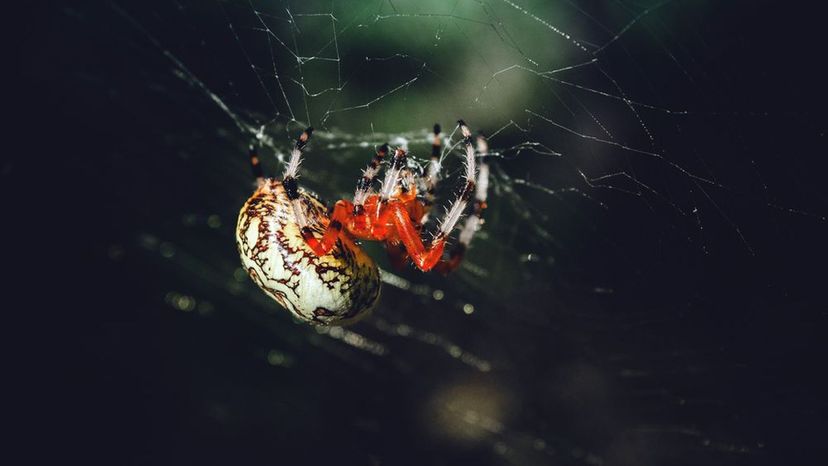
Shutterstock
Which spider is shown in this image?
Golden Orb Weaver
Daddy Long Legs
Sac Spider
Marble Orb Weaver
The female Marble Orb Weaver has a huge abdomen which is often orange with spots of pale yellow and brown to purple markings. Marble Orb Weaver Spiders like to build their webs among the plants that grow along the banks of streams.
Advertisement
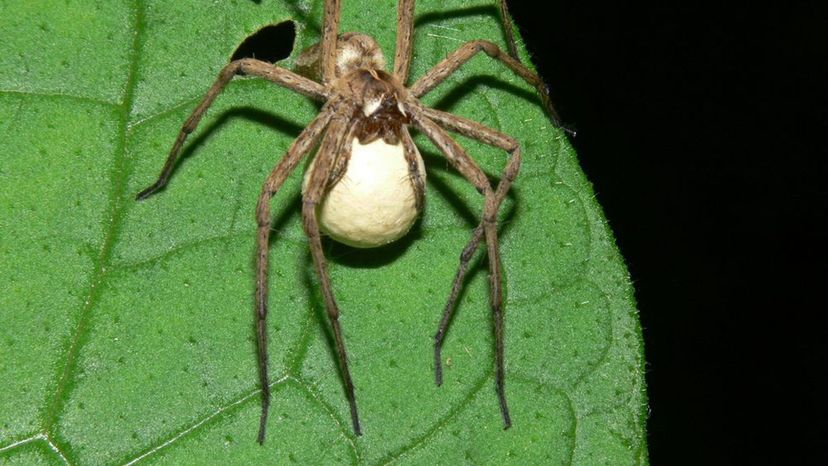
Shutterstock
Which spider is shown in this image?
Johnson Jumping Spider
Nursery Web Spider
Nursery Web Spiders come in various colors but their large and hairy appearance means they are often mistaken for Wolf Spiders. The female Nursery Web Spider builds a silken "tent†for her egg sac and guards it until the young spiders emerge.
Black and Yellow Garden Spider
Hacklemesh Weaver
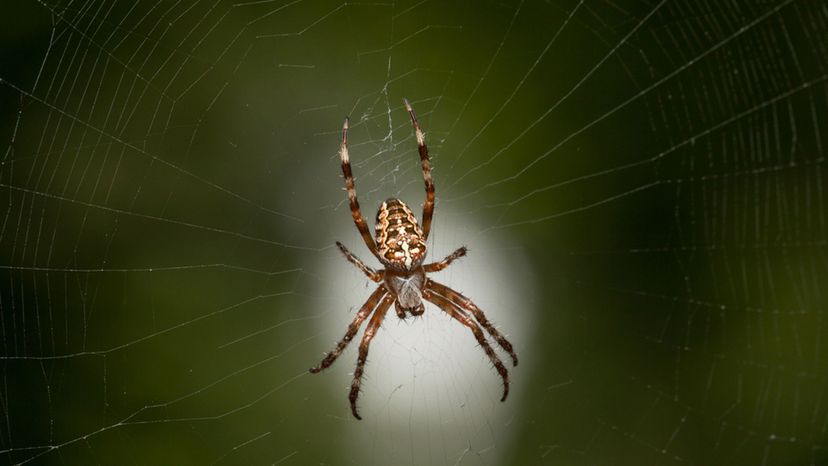
Shutterstock
Which spider is shown in this image?
Triangulate Cob Web Spider
Running Crab Spider
Cross-spider
Cross-Spiders can range in color from light yellow, to orange-brown, to dark grey. What they all have in common, however, are mottled markings across their abdomens with at least five large white dots in the shape of a cross.
Wolf Spider
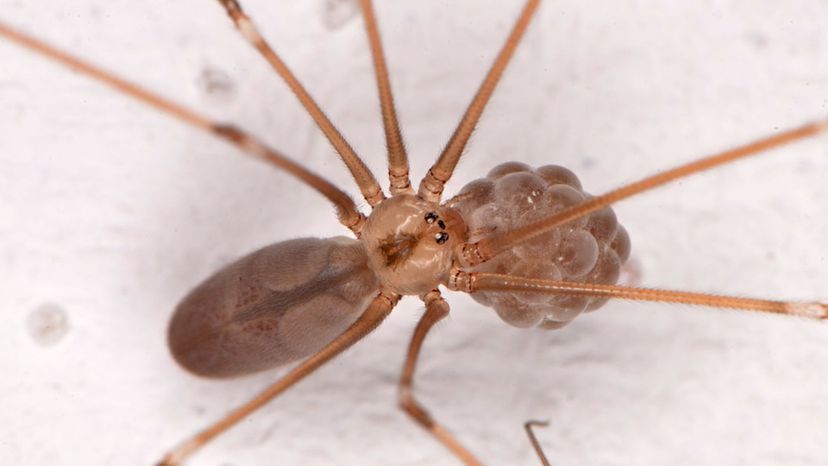
Shutterstock
Which spider is shown in this image?
Long-bodied Cellar Spider
The Long-bodied Cellar Spider has extremely long legs and prefers to stay hidden away in sheltered areas. As a result, they can often be found in dark, quiet spots, such as cellars, garages, warehouses and caves.
Six-spotted Fishing Spider
Sowbug Killer Spider
Carolina Wolf Spider
Advertisement
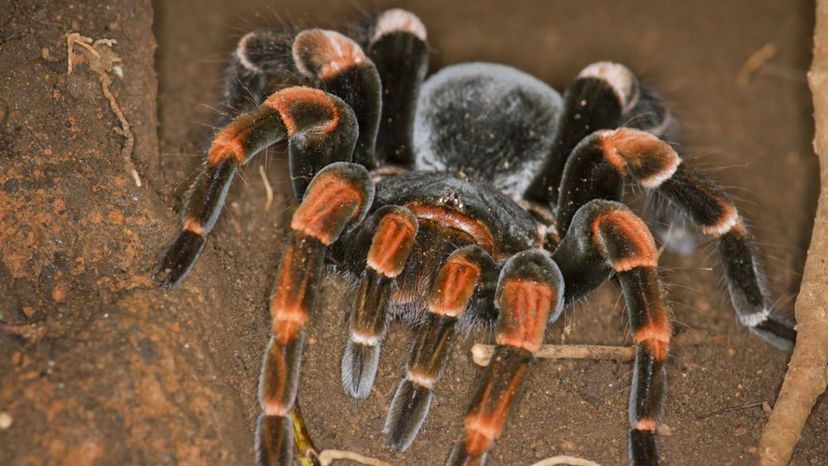
Shutterstock
Which spider is shown in this image?
California Trapdoor Spider
Banded Garden Spider
American House Spider
Mexican Orange-Kneed Tarantula
This very large and very hairy spider is both endangered and protected. The males have longer legs than the females but as is typical of most spider species, they have smaller bodies.
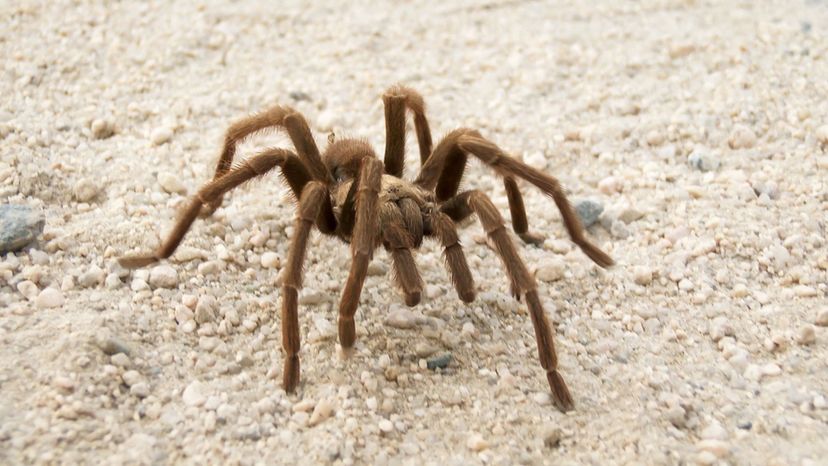
Shutterstock
Which spider is shown in this image?
Shamrock Spider
Desert Tarantula
Found in dry regions of both Arizona and Mexico, this spider is often called the "Blond Tarantula†due to its covering of thick, pale hair. They hunt mostly at night and prefer to stay close to their burrows, venturing further away only during mating season.
Spined Micrathena Spider
Western Spotted Orb Weaver
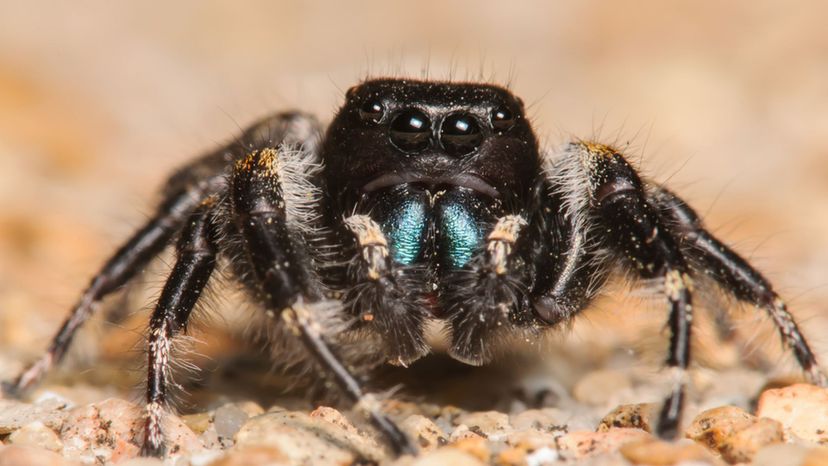
Shutterstock
Which spider is shown in this image?
Trashline Orb Weaver
Red Folding Trapdoor Spider
Johnson Jumping Spider
This tiny spider can jump a distance more than 5 times its body length. It is a daytime hunter that prefers to pounce on its prey rather than build webs.
Red ant-mimic Spider
Advertisement
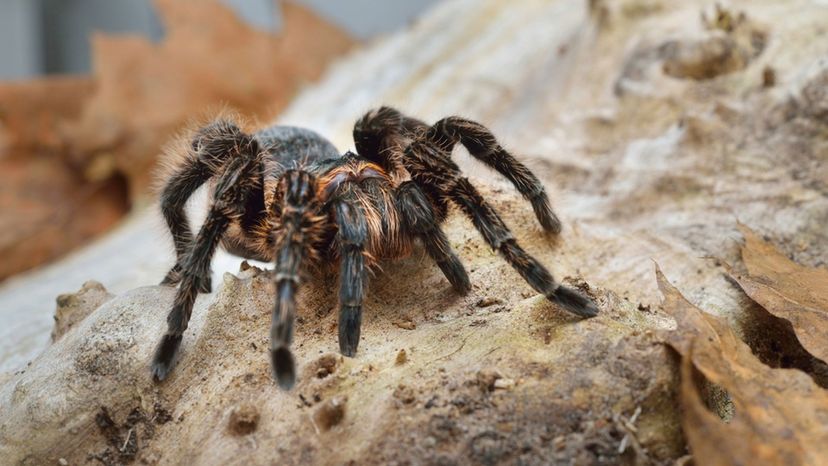
Shutterstock
Which spider is shown in this image?
Curlyhair Tarantula
This Central American native is closely related to the Mexican Orange-Kneed Tarantula. It is covered in curled dark-brown to black hairs that have a distinctive golden sheen.
Brown Widow
Orb Weaver
Running Crab Spider
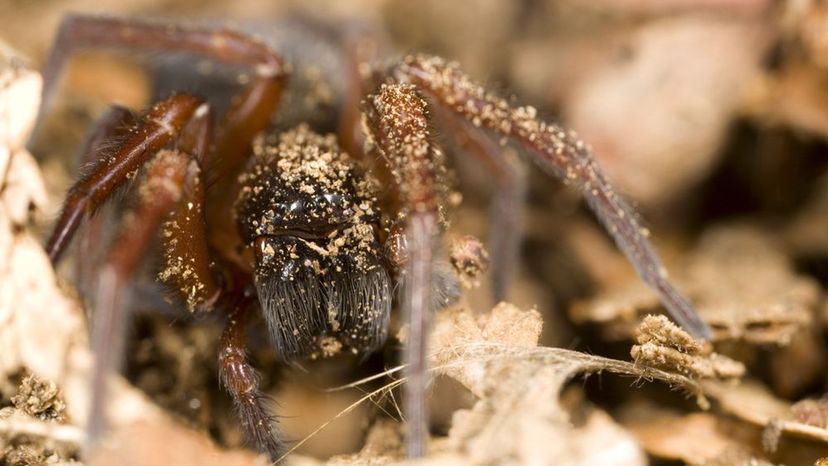
Shutterstock
Which spider is shown in this image?
Tan Jumping Spider
Black Widow
Woodland Jumping Spider
Hacklemesh Weaver
The Hacklemesh Weaver will eat whatever gets caught in its web - including other spiders. They have also been known to eat earthworms.
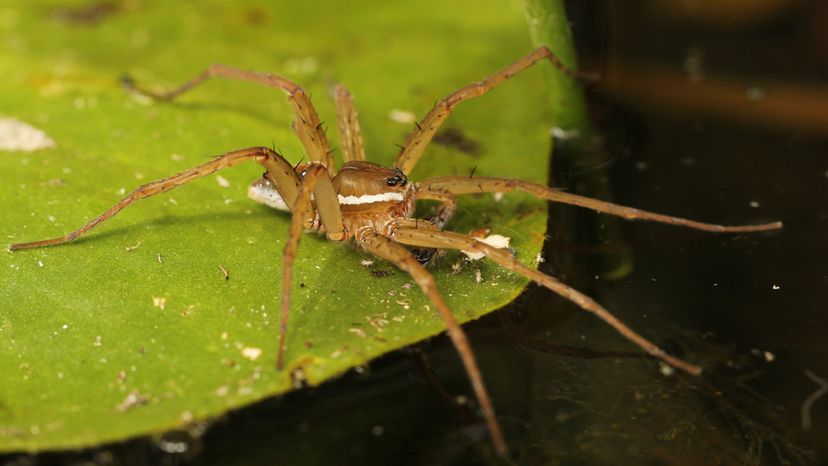
Shutterstock
Which spider is shown in this image?
Arrow-shaped Micrathena Spider
Silver Garden Spider
Six-spotted Fishing Spider
To figure out this spider's name, count the black spots on its underside - six of them. If you count the white spots on the top of its abdomen, you'll get a whole lot more than six.
Venusta Orchard Spider
Advertisement
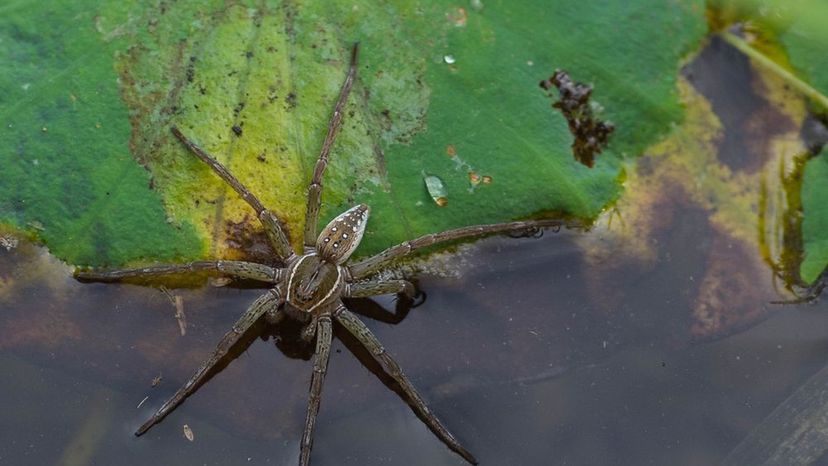
Shutterstock
Which spider is shown in this image?
Fishing Spider
Fishing Spiders look very much like larger versions of Wolf Spiders in that they have the similar coloration and shape. There have been reports of them catching small fish.
Long-bodied Cellar Spider
Black and Yellow Garden Spider
Arrowhead Orb Weaver
You Got:
/47
Shutterstock
